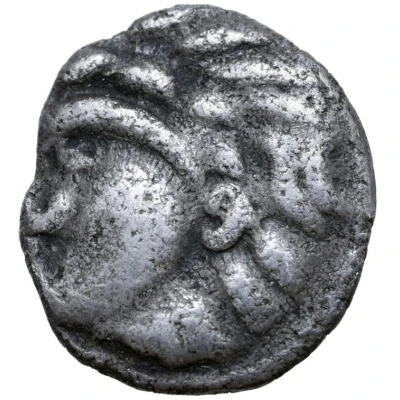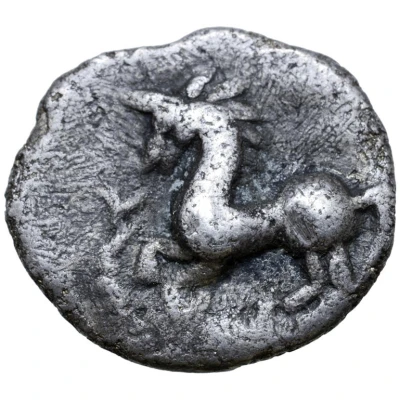


© Roma Numismatics Limited
Quinarius Büschelquinare Prototype 300 BC - 101 BC
| Silver | 0.33 g | 7 mm |
| Issuer | Vindelici |
|---|---|
| Type | Standard circulation coin |
| Years | 300 BC - 101 BC |
| Value | Quinarius (0.5) |
| Currency | Drachm |
| Composition | Silver |
| Weight | 0.33 g |
| Diameter | 7 mm |
| Shape | Round (irregular) |
| Technique | Hammered |
| Orientation | Variable alignment ↺ |
| Demonetized | Yes |
| Updated | 2024-10-09 |
| Numista | N#191805 |
|---|---|
| Rarity index | 100% |
Reverse
Horse galloping to left; serpent before.
Comment
Kellner, Manching pl. 3, 62; Steffgen/Ziegaus pl. 1, 2;Examples of this type:
• Example #1 (1.70g, 14mm; Very Fine) - In main image:
◦ Ex-Hermann Lanz Collection; published in Kostial #15;
◦ Exhibited by the Staatlichen Münzsammlung München at the 1997 International Numismatic Congress in Berlin; at the Berliner Bank also in 1997; also exhibited at the Luitpoldblock Palmengarten, Munich in 2003 (exhibition #9[obverse]);
◦ Auctioned by Roma Numismatics Ltd, Auction XVII, 28 March 2019, Lot 8. Sold for 160 GBP.
◦ Auctioned by Numismatik Lanz (Graz), Auction V, 1 December 1975, lot 13.
Interesting fact
One interesting fact about the Quinarius coin from Vindelici is that it was used as a form of currency during a time of great cultural and economic change in the region. The coin was introduced during the reign of the Roman Republic, and it played an important role in facilitating trade and commerce between different regions of the empire. Despite its small size and relatively low value, the Quinarius was widely used and highly valued by merchants and traders, and it remained in circulation for several centuries. Today, the coin is highly sought after by collectors and historians, providing a unique glimpse into the economic and cultural practices of ancient civilizations.